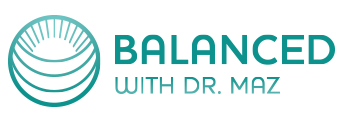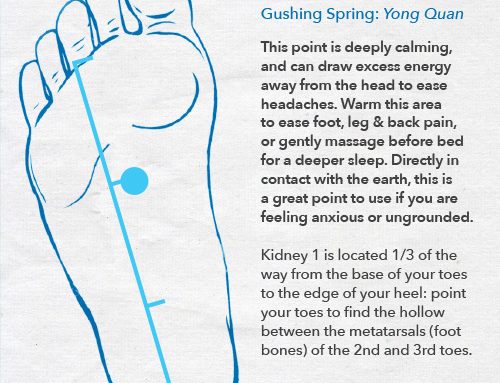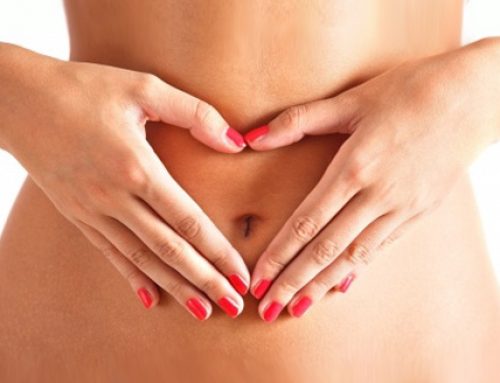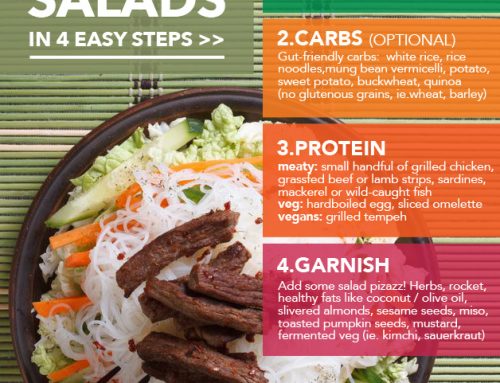This post was originally written for, and published by, QENDO. Thank you QENDO for your wonderful and important work in endometriosis support and awareness.
Although endometriosis as a “condition” was only defined relatively recently (in 1860), women have been affected by symptoms commonly associated with endometriosis – such as pelvic pain & masses, painful/heavy periods, painful urination/defecation/intercourse and fatigue – for thousands of years. More than 2,000 years ago, Chinese Medicine textbooks not only described these symptoms (1,2,3,4), but also gave herbal, acupuncture & lifestyle treatment strategies to ease their impact and help women enjoy greater wellness. These same textbooks are still in clinical use today, and we continue to draw on the same herbal prescriptions and acupuncture treatments that have been used on thousands of women over the centuries. Unlike some of the other forms of treatment for endometriosis, acupuncture and Chinese herbal medicine have little to no side effects, and research continues to grow with respect to the relief that they can bring to women affected by this condition. There is already considerable evidence for the use of acupuncture in managing endometriosis symptoms (5,6,7,8,9). On the herbal front, preliminary studies suggest that customised herbal formulas can be as, or more effective, than some standard hormone treatments – with significantly less adverse effects, and a better quality of life (10,11,12,13,14). One of the suggested reasons for these lower side effects is that rather than putting in chemicals from external sources (such as painkillers, anti-inflammatories or hormone medication), acupuncture and herbal medicine prescriptions encourage your body to release its own painkillers (endorphins), moderate inflammation using its own immune molecules and can also balance hormone levels – all without adding anything in to your system (15,16,17,18,19). Yet another study, of over 22,000 Chinese endometriosis patients, found that those patients who used Chinese herbal medicine were less likely to undergo surgery (20). Further studies are required to continue to investigate this, but such results are certainly promising for women living with endometriosis.
What do we aim to do with Chinese Medicine?
Ultimately, we are working towards your body finding its optimal healthy balance. As you may have discovered through connecting with other amazing QENDO women, although there are many similarities in how we experience this condition, each woman is a unique individual and what works for one of us may not work for the other. This acknowledgment of our uniqueness is at the core of Chinese Medicine, and so treatment looks at what is going on for you individually at a given point in time, and how we can bring your system back into a state of balance. This is also why it is important to trust your own instincts as to what therapies and treatments are best for you – you know your body best of all, and you’re the one it communicates with in each moment.
How do we do this? What does a treatment session look like?
So that treatment can be tailored to you individually, a consult will begin with a thorough intake to discover more about your symptoms, as well as other aspects of general health that can give valuable insight into the internal balance of the body, i.e. energy levels, digestion, bowel habits, pain patterns. Your practitioner will then read your pulse, and gently palpate your abdomen to identify any areas of pain or congestion. All of this information is gathered to formulate the best treatment plan for you.
Once we have all this information, it’s time to lie down and relax. Acupuncture needles are so fine – and most often, totally painless – that some of my younger patients suggested they should be called “fairy wands” instead! Once the needles are in place, I also like to use an infrared heat lamp over the abdomen – this promotes blood flow to the organs, relaxes the muscles (to again further improve flow) and can help with tissue healing. At this point, many patients fall asleep! While you are resting, your practitioner will review your notes and write a prescription herbal formula tailored to you.
Your practitioner may also perform “cupping” over the abdomen to ease pain and congestion. Remember those salami-like marks that Olympic swimmers were proudly sporting recently? They were all getting Chinese cupping treatments! Cupping uses sterile, glass cups to create a painless suction over an area that may be congested or scarred. This suction can promote lymphatic, vascular and interstitial circulation in an area. Bringing fresh blood and lymph to the area, while encouraging the removal of old matter, can help to promote healing of tissues, and release areas of tightness around scar tissue.
What else can I do to support myself?
Regular treatments can be amazing for mind and body, but then there are all the other hours in the week in which we can make choices that support our health. Chinese Medicine considers diet to be at the foundation of optimal wellness. Again, we are all individuals, so your practitioner can work with you to discuss foods that will best support you, while also reducing systemic inflammation – a common contributor to pain. Many women find that reducing inflammatory foods such as certain vegetable oils (i.e. sunflower, canola, soy), preservatives and additives is helpful. For some women with attendant digestive issues, a period of gluten and/or dairy avoidance may be required to allow the gut to heal – which will then often have positive outcomes for overall health. As endometriosis is affected by estrogen levels, foods that naturally regulate levels of this hormone – such as cruciferous vegetables, leafy greens and onions – can be a great addition to your diet (if individually appropriate).
A stressed body is one that is more prone to inflammation and pain, so adequate sleep (asleep by 10pm ideally!) and stress-management can be part of your ongoing self-care. Self-care will look different for each of us, whether it’s walking, meditation, yoga, reading or quiet time alone. Self-care can also mean limiting negative situations, people and media that can cause stress. When we get stressed, our nervous system switches into “fight-or-flight” (Sympathetic nervous system) mode: in this state we are primed for action, but our body puts healing, cell repair and healthy cellular metabolism on the backburner. Therefore, activities and situations that encourage “rest-and-digest” mode (Parasympathetic nervous system) can be helpful for our health. A simple way to let your body know it is safe to relax is deep belly breathing, with a focus on lengthening the exhalation. I’ve written some more about this topic here – including a simple breathing exercise you can try any time.
Ultimately it’s your body and your journey, so all treatment options are worth exploring to find what works for you! Please get in touch if you’d like to find out more about how acupuncture and Chinese herbal medicine could help you, or someone you love.
REFERENCES & RESEARCH
1. Sung, YM (2008). Understanding the Jing Gui Yao Lue. Beijing, China: People’s Medical Publishing House.
2. Wiseman N & Wilms S (2013). Jin Gui Yao Lue: Essential Prescriptions of the Golden Cabinet. Taos, New Mexico USA: Paradigm Publications.
3. Liu GH (2016). Discussion of Cold Damage (Shang Han Lun): Commentaries & Clinical Applications. Philadelphia, USA: Singing Dragon.
4. Song JS, Liu HY & Han MM (2016). Evidence-based Medicine Research on Shanghan Zabing Lun Prescriptions in the Treatment of Endometriosis. Open Journal of Obstetrics and Gynecology, 6:769-784.
5. Kotani N, Kushikata T, Suzuki A, Hashimoto H, Muraoka M & Matsuki A (2001). Insertion of Intradermal Needles Into Painful Points Provides Analgesia for Intractable Abdominal Scar Pain, Regional Anesthesia and Pain Medicine, 26(6), November/December 2001:532–538.
6. Lund I & Lundberg T (2016). Is acupuncture effective in the treatment of pain in endometriosis? Journal of Pain Research, (9):157-165.
7. Sriprasert I, Suerungruang S, Athilarp P, Matanasarawoot A, & Teekachunhatean S (2015) Efficacy of Acupuncture versus Combined Oral Contraceptive Pill in Treatment of Moderate-to-Severe Dysmenorrhea: A Randomized Controlled Trial, Evidence-Based Complementary and Alternative Medicine, Vol.2015.
8. Mira TAA, Buen MM, Borges MG, Yela DA & Benetti-Pinto CL (2018) Systematic review and meta-analysis of complementary treatments for women with symptomatic endometriosis. International Journal of Gynaecology & Obstetrics 2018, (4):2-9.
9. Xu Y, Zhao W, Li T, Zhao Y, Bu H & Song S (2017). Effects of acupuncture for the treatment of endometriosis-related pain: A systematic review and meta-analysis. PLoS One, 2017 Oct 27;12(10).
10. Li YT, Li T & Song SL (2017). Evaluation of Efficacy and Safety of Dan’e-Fukang Soft Extract in the Treatment of Endometriosis: A Meta-Analysis of 39 Randomized Controlled Trials Enrolling 5442 Patients. Evidence-Based Complementary and Alternative Medicine, 2017.
11. Flower A, Liu JP, Lewith G, Little P & Li Q (2012). Chinese herbal medicine for endometriosis, Cochrane Database of Systematic Reviews, edited 2012.
12. Zhao RH, Liu Y, Tan Y, Hao ZP, Meng QW, Wang R et al. (2012). Chinese Medicine Improves Postoperative Quality of Life in Endometriosis Patients: A Randomized Controlled Trial, The Chinese Journal of Integrative Medicine, 2013 Jan; 19(1):15-21.
13. Kong S, Zhang YH, Liu, CF, Tsui I, Guo Y, Ai BB & Han FJ (2014). The Complementary and Alternative Medicine for Endometriosis: A Review of Utilization and Mechanism, Evidence-Based Complementary and Alternative Medicine 2014.
14. Zhao RH, Hao ZP, Zhang Y, Lian FM et al. (2013). Controlling the Recurrence of Pelvic Endometriosis after A Conservative Operation: Comparison between Chinese Herbal Medicine and Western Medicine, Chinese Journal of Integrative Medicine, 19(11): 820-825
15. Han, JS (2004). Acupuncture and endorphins; Neuroscience Letters, May 6, 361(1-3):258-261.
16. Staud R & Price DD (2006). Mechanisms of acupuncture analgesia for clinical and experimental pain. Expert Review Neurotherapeutics. 2006; 6(5):661-667.
17. Torres-Rosas R, Yehia G, Peña G, Mishra P, del Rocio Thompson-Bonilla M, Moreno-Eutimio MA, et al. (2014). Dopamine mediates vagal modulation of the immune system by electroacupuncture. Nature Medicine, 2014; 20(3):291-295.
18. Ma J, Yun-guang H, Zhang DH (2008). Effects of acupuncture on bone metabolism and serum estradiol level in ovariectomy-induced osteoporosis rats. Zhen Ci Yan Jiu. 2008; 33(4): 235-239.
19. Zhang R, Lao L, Ren K & Berman BM. Mechanisms of acupuncture-electroacupuncture on persistent pain. Anesthesiology, 2014 Feb; 120(2):482-503.
20. Su SY, Muo CH, Sung FC & Morisky DE (2014) Reduction of surgery rate in endometriosis patients who take Chinese medicine: a population-based retrospective cohort study. Complementary Therapies in Medicine (22):632-639.






